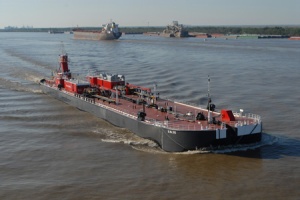A barge is a vessel that is not exactly known for stability issues therefore possible problems that are fatal to your marine operations may be ignored and thus take their toll on your barge. A barge will mostly show its problems up-front if they are serious or present; however, it will be too late to address them since now their effect is visible on say the hull of your ship. So, in beginning the analysis it is worth pointing at a possible variable that will affect your barge’s stability; overload of cargo.
According to John Boyd of joc.com (1994) barges that are overloaded deeper than 9ft get trapped on sandbars resulting in a possible loss of permission from state agencies that can be used for operations such as emergency dredging. While this does not necessarily affect stability of the barge, it does so its operations and voyages.
Tank barges have specific parameters in order to maximise chances of surviving a problem. The solutions start from focusing on areas where damage was sustained where the hinges must be taken. The problems complicate when variables conflict with each other where maintenance of transverse or lateral stability to avoid capsizing of the vessel altogether by means of maintaining enough reserve buoyancy which keeps it afloat; minimising cargo loss and resulting pollution. Finally, tugs, towboats and fully-loaded single-skin barges have little reserve buoyancy which is further decreased by its steel construction.
However, as much as stability is an issue it comes only from external factors such as collision or past grounding of the vessel which resulted in damage. Assuming the worst-case scenario, what if the damage was not visible at first and therefore involuntarily neglected, causing your vessel to accumulate the side-effects. Primarily, the crossover valves between a barge’s tanks having free surface areas should be closed at all times in order to minimise free surface effect; preventing unintented hydrostatic ballancing. A loaded barge should have its crossovers open between holed tanks and their opposites; causing a list to the opposite side. Opening a crossover equalises the flow and the levels. A light barge also should have its crossovers open so that during damage, tanks on the opposite sides from damaged and flooding tanks will therefore, counter flood.



